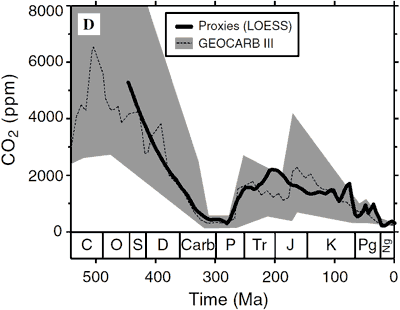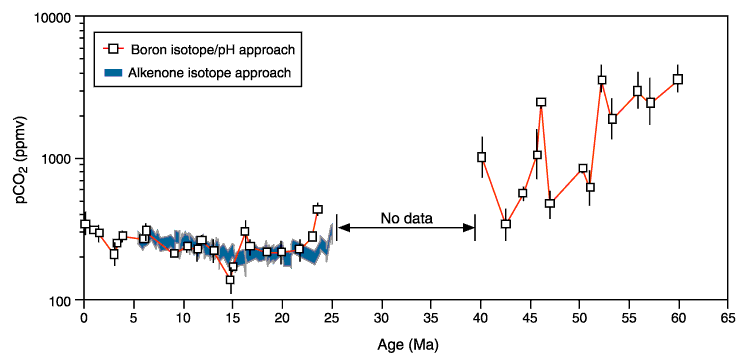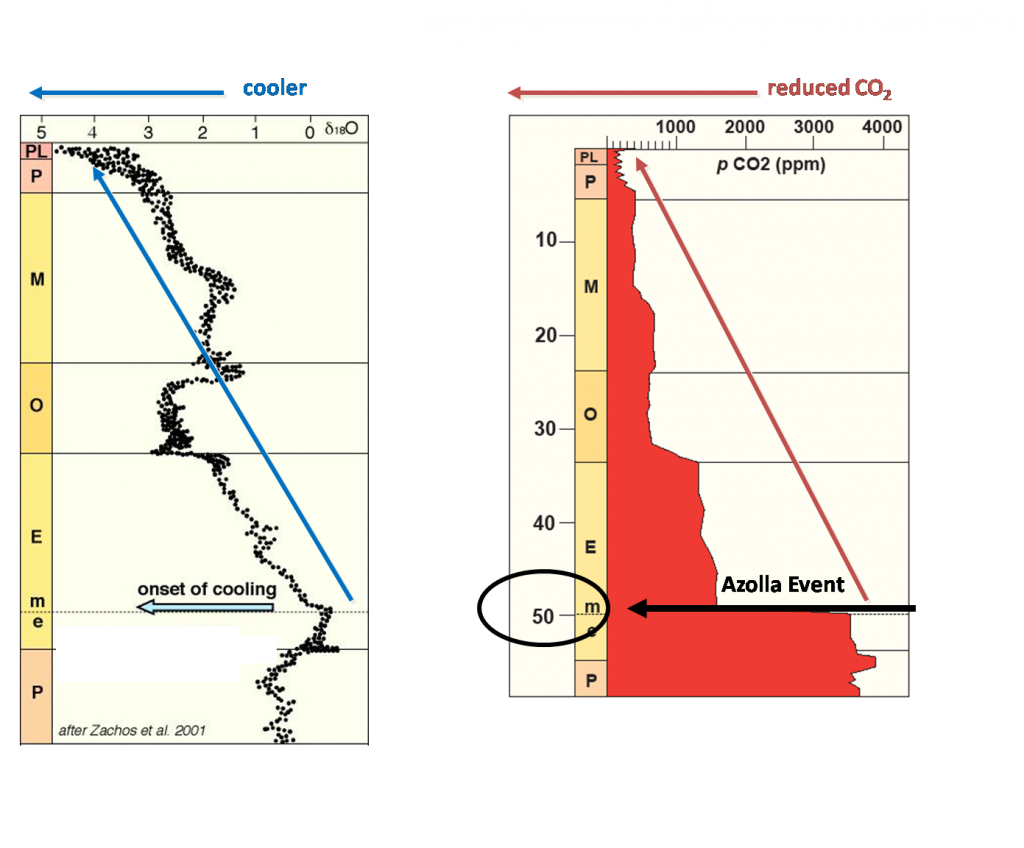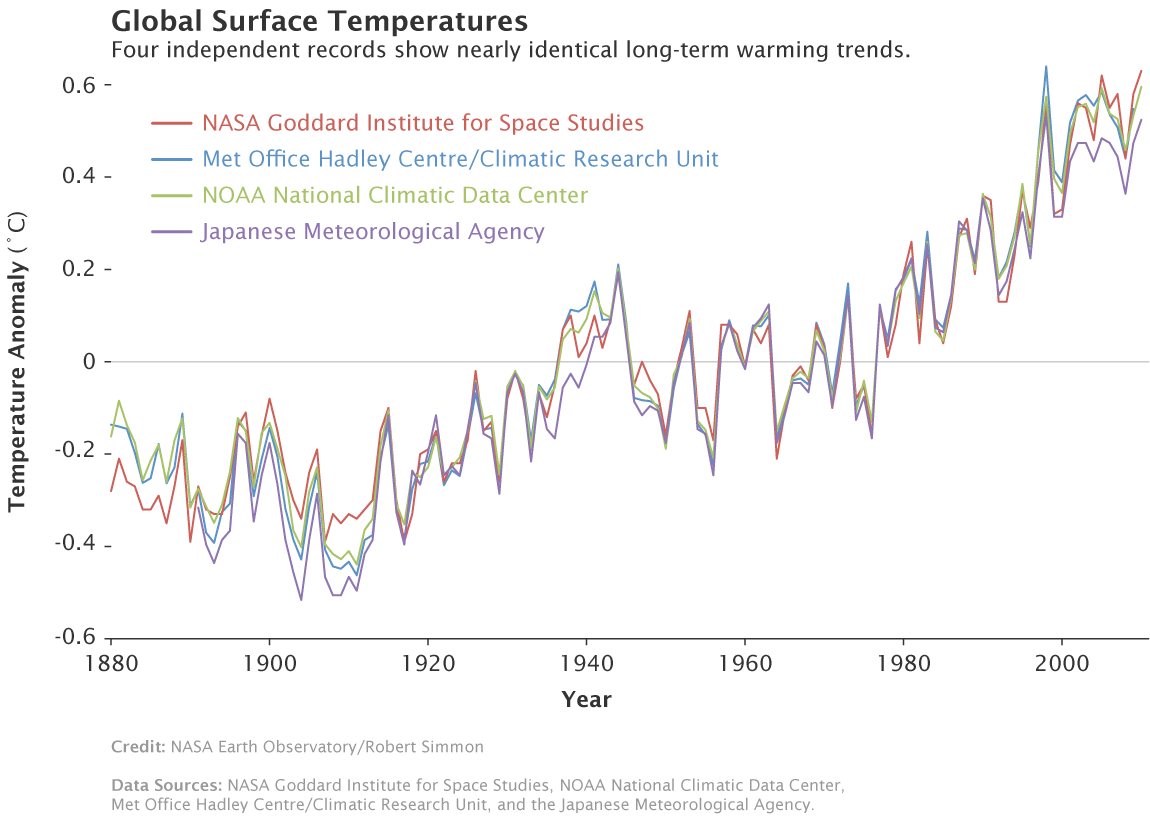FIGURE 2. Evolution of atmospheric CO2 levels and global climate over the past 65 million years.
From the following article:
An early Cenozoic perspective on greenhouse warming and carbon-cycle dynamics
James C. Zachos, Gerald R. Dickens & Richard E. Zeebe
Nature 451, 279-283(17 January 2008)
doi:10.1038/nature06588
back to article
a, Cenozoic
pCO2 for the period 0 to 65 million years ago. Data are a compilation of marine (see ref.
5 for original sources) and lacustrine
24 proxy records. The dashed horizontal line represents the maximum
pCO2 for the Neogene (Miocene to present) and the minimum
pCO2 for the early Eocene (1,125 p.p.m.v.), as constrained by calculations of equilibrium with Na–CO3 mineral phases (vertical bars, where the length of the bars indicates the range of
pCO2 over which the mineral phases are stable) that are found in Neogene and early Eocene lacustrine deposits
24. The vertical distance between the upper and lower coloured lines shows the range of uncertainty for the alkenone and boron proxies.
b, The climate for the same period (0 to 65 million years ago). The climate curve is a stacked deep-sea benthic foraminiferal oxygen-isotope curve based on records from Deep Sea Drilling Project and Ocean Drilling Program sites
6, updated with high-resolution records for the interval spanning the middle Eocene to the middle Miocene
25, 26, 27. Because the temporal and spatial distribution of records used in the stack are uneven, resulting in some biasing, the raw data were smoothed by using a five-point running mean. The
18O temperature scale, on the right axis, was computed on the assumption of an ice-free ocean; it therefore applies only to the time preceding the onset of large-scale glaciation on Antarctica (about 35 million years ago). The figure clearly shows the 2-million-year-long Early Eocene Climatic Optimum and the more transient Mid-Eocene Climatic Optimum, and the very short-lived early Eocene hyperthermals such as the PETM (also known as Eocene Thermal Maximum 1, ETM1) and Eocene Thermal Maximum 2 (ETM2; also known as ELMO).
, parts per thousand.
Figure 2 : An early Cenozoic perspective on greenhouse warming and carbon-cycle dynamics : Nature
From my perspective, very interesting graphs. You see, during the Miocene, the temperature was pretty stable. As was the CO2 levels. But, as the Isthmus of Panama closed, you see that plunge in temperatures, and the glaciation cycles of the Northern Hemisphere. So, the combination of the closing of the Isthmus and the low CO2 levels resulted in our present ice age cycles. Since we have never seen a spike of GHGs like that we are creating with the combination of the closed Isthmus and a north polar ice cap, kind of hard to predict exactly what is going to happen. By what we are already observing in the Arctic and Greenland, we will see some major changes there by 2030.







